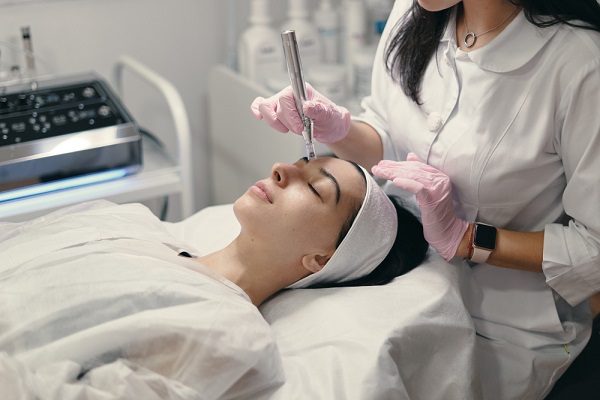
If you’ve been dealing with scarring on the face, whether minor or severe, you must have come across an array of acne treatment options. While some suggestions come from our grandmothers, others are recommended by experts.
However, keeping the advancements that the current technology has undergone, the medical world has a lot of options to offer. Out of the substantial ones, microneedling has been the talk of the town for a while now.
Although it sounds more like an intimidating procedure, courtesy of the mentioning of “needle”, in reality, this acne skin treatment is minimally-invasive and offers a variety of skin-boosting results.
For those who haven’t got a chance to get familiar with this process, this article covers everything you must know about microneedling.
What is Microneedling?
Also known as Rejuvapen and Dermapen, Microneedling is a collagen induction therapy. This treatment is specifically designed to promote skin rejuvenation.
Under this procedure, small punctures are created on the top layer of the skin with needles. This leads to the production of new elastin and collagen. The tool makes use of up to 11 super-tiny needles with a tip that ranges between 0.5 and 2.5 millimetres.
Basically, the procedure tricks your skin into thinking that there is a wound. This way, the skin sends fibroblasts to create more collagen in that particular area. As a result, the skin thickens, and the texture is improved.
It is also effectively being used across the world as the best acne treatment to heal acne scars and decrease pore size.
Procedure of Microneedling
To understand the concept of microneedling in a better way, here is its entire procedure:
- To begin with, your face is thoroughly cleaned first
- A topical numbing cream is then applied all around.
- Once the effect sets in, which takes typically 10-20 minutes, the doctor applies a serum to promote skin healing and repairing
- And then, a microneedling pen is passed back and forth across your face.
- The needles move up and down to the “needle in” the serum.
- Once the process is completed, an additional layer of serum is applied.
- A mask is then used to seal everything.
Is Microneedling a Painful Procedure?
Undoubtedly, the idea of small needles piercing through your skin would sound like a painful factor rather than the best acne skin treatment. However, fret not! The numbing cream applied at the beginning takes away the penetrating feeling. However, some people may still feel minimal pain during the procedure.
Once done, your skin may become pinkish. Some people may also experience small punctate scabs popping up on the face. But they subside in a few days to bring out a better texture.
Who Should Go with Microneedling?
Microneedling is the best treatment for acne scars. Since the process is completely mechanical and doesn’t use heat, it is safe for all skin types and colours.
This one is an effective treatment for smoothing the skin and filling out acne scars. Also, if your skin has small bumps from clogged pores, microneedling can help clear them off as well.
However, before going for the treatment, make sure there are not any infected or inflamed areas on your skin. Additionally, if you have any cystic breakout, you must wait until everything clears up.
Furthermore, those who have extremely sensitive skin or are dealing with rosacea and eczema should steer clear of this process. You should also avoid this process if you’re currently on blood thinners or drink alcohol frequently.
How Often Should You Get Microneedling Done?
The frequency of this process significantly depends upon the severity of the skin issue. If you take care of your skin and it is generally fine, you can go with the process every three to six months.
However, if you have dramatic acne scarring, you can plan out at least one session a month. And then, if you think your skin requires a reboot, you can go with one session a year for touch-ups.
Aftercare for Microneedling
Post the sessions; your skin will be sensitive and red. Thus, you must:
- Go with a chemical-free sunscreen with SPF 30 (at minimum) in the following weeks after the treatment.
- You must avoid acids and retinol, like salicylic and glycolic, as the ingredients will be too strong after the procedure.
- You must ensure that you’re keeping your skin hydrated. For this, you can apply a mild cleanser and hydrating serum every now and then.
- Avoid the use of exfoliating scrubs right after getting the treatment done.
- Ideally, avoid putting on too much makeup for a few weeks.
Wrapping Up
Now that you’ve understood so much about the process of microneedling, make sure you get through research done and find only a licensed practitioner. Prepare a list of questionnaires and get all of the answers before finalizing the appointment.
Visit our website for more information.

